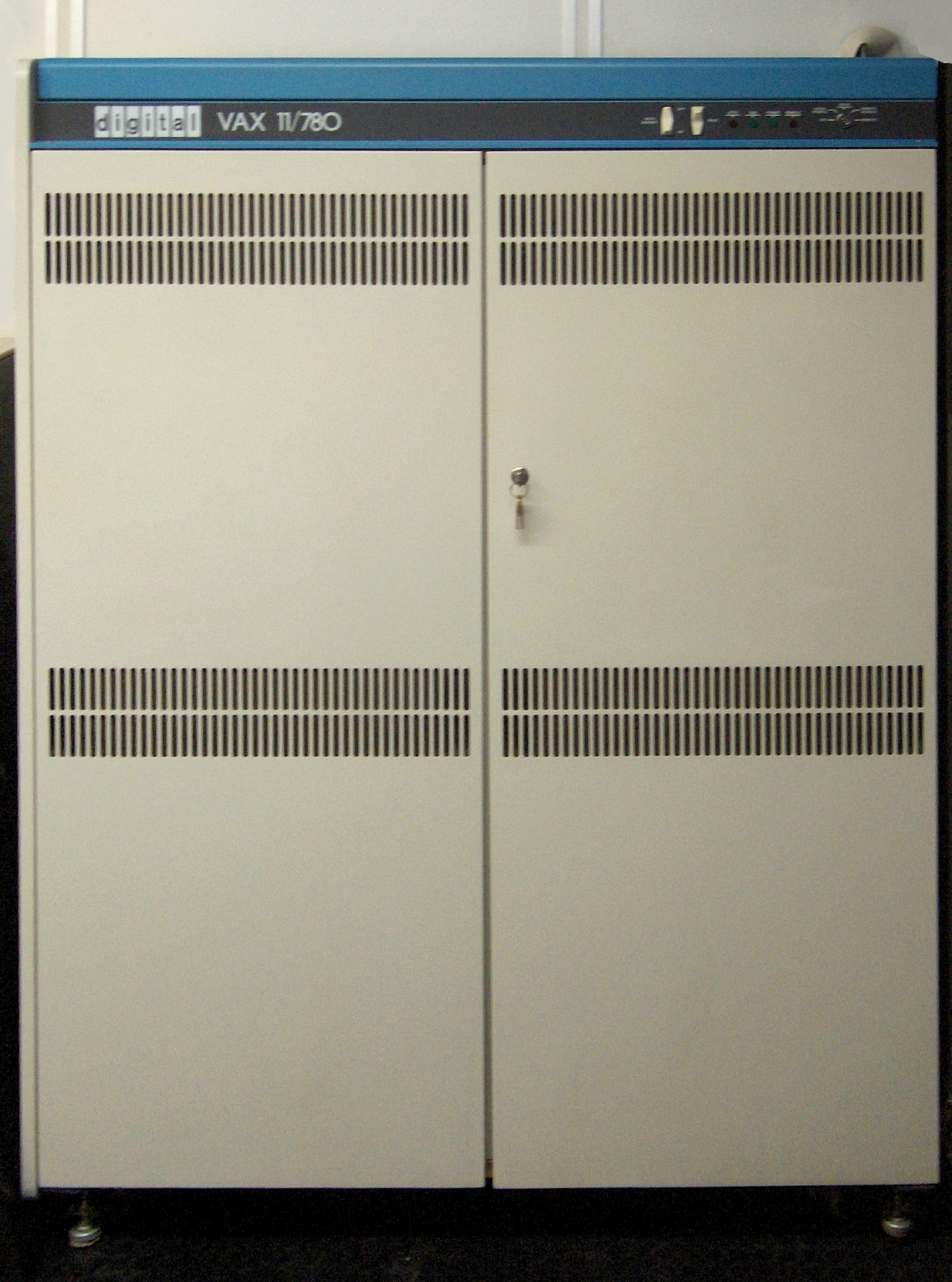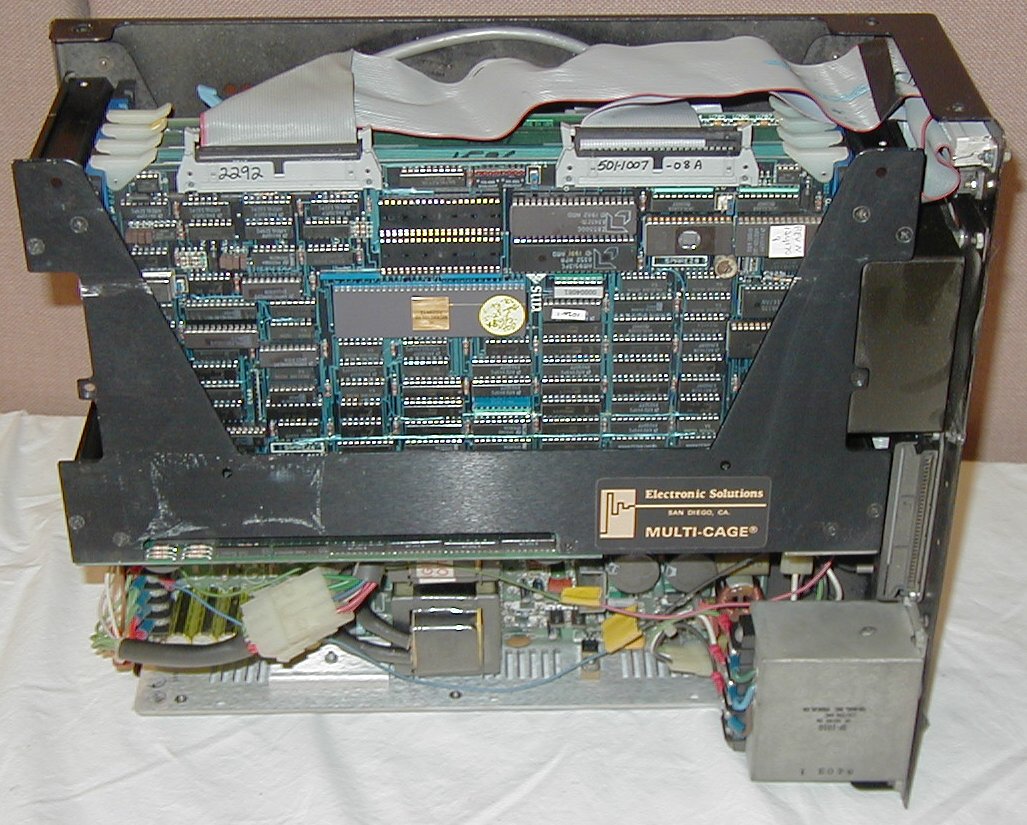|
Bill Joy
William Nelson Joy (born November 8, 1954) is an American computer engineer and venture capitalist. He co-founded Sun Microsystems in 1982 along with Scott McNealy, Vinod Khosla, and Andy Bechtolsheim, and served as Chief Scientist and CTO at the company until 2003. He played an integral role in the early development of BSD UNIX while being a graduate student at Berkeley, and he is the original author of the vi text editor. He also wrote the 2000 essay " Why The Future Doesn't Need Us", in which he expressed deep concerns over the development of modern technologies. Joy was elected a member of the National Academy of Engineering (1999) for contributions to operating systems and networking software. Early career Joy was born in the Detroit suburb of Farmington Hills, Michigan, to William Joy, a school vice-principal and counselor, and Ruth Joy. He earned a Bachelor of Science in electrical engineering from the University of Michigan and a Master of Science in electric ... [...More Info...] [...Related Items...] OR: [Wikipedia] [Google] [Baidu] |
C Shell
The C shell (csh or the improved version, tcsh) is a Unix shell created by Bill Joy while he was a graduate student at University of California, Berkeley in the late 1970s. It has been widely distributed, beginning with the 2BSD release of the Berkeley Software Distribution (BSD) which Joy first distributed in 1978. Other early contributors to the ideas or the code were Michael Ubell, Eric Allman, Mike O'Brien and Jim Kulp. The C shell is a command processor which is typically run in a text window, allowing the user to type and execute commands. The C shell can also read commands from a file, called a script. Like all Unix shells, it supports filename wildcarding, piping, here documents, command substitution, variables and control structures for condition-testing and iteration. What differentiated the C shell from others, especially in the 1980s, were its interactive features and overall style. Its new features made it easier and faster to use. The overall style of th ... [...More Info...] [...Related Items...] OR: [Wikipedia] [Google] [Baidu] |
World Economic Forum
The World Economic Forum (WEF) is an international non-governmental and lobbying organisation based in Cologny, canton of Geneva, Switzerland. It was founded on 24 January 1971 by German engineer and economist Klaus Schwab. The foundation, which is mostly funded by its 1,000 member companies – typically global enterprises with more than five billion US dollars in turnover – as well as public subsidies, views its own mission as "improving the state of the world by engaging business, political, academic, and other leaders of society to shape global, regional, and industry agendas". The WEF is mostly known for its annual meeting at the end of January in Davos, a mountain resort in the eastern Alps region of Switzerland. The meeting brings together some 3,000 paying members and selected participants – among whom are investors, business leaders, political leaders, economists, celebrities and journalists – for up to five days to discuss global issues across 500 sessions. ... [...More Info...] [...Related Items...] OR: [Wikipedia] [Google] [Baidu] |
American Academy Of Arts And Sciences
The American Academy of Arts and Sciences (abbreviation: AAA&S) is one of the oldest learned societies in the United States. It was founded in 1780 during the American Revolution by John Adams, John Hancock, James Bowdoin, Andrew Oliver, and other Founding Fathers of the United States. It is headquartered in Cambridge, Massachusetts. Membership in the academy is achieved through a thorough petition, review, and election process. The academy's quarterly journal, '' Dædalus'', is published by MIT Press on behalf of the academy. The academy also conducts multidisciplinary public policy research. History The Academy was established by the Massachusetts legislature on May 4, 1780, charted in order "to cultivate every art and science which may tend to advance the interest, honor, dignity, and happiness of a free, independent, and virtuous people." The sixty-two incorporating fellows represented varying interests and high standing in the political, professional, and commerc ... [...More Info...] [...Related Items...] OR: [Wikipedia] [Google] [Baidu] |
Berkeley Software Distribution
The Berkeley Software Distribution or Berkeley Standard Distribution (BSD) is a discontinued operating system based on Research Unix, developed and distributed by the Computer Systems Research Group (CSRG) at the University of California, Berkeley. The term "BSD" commonly refers to its open-source descendants, including FreeBSD, OpenBSD, NetBSD, and DragonFly BSD. BSD was initially called Berkeley Unix because it was based on the source code of the original Unix developed at Bell Labs. In the 1980s, BSD was widely adopted by workstation vendors in the form of proprietary Unix variants such as DEC Ultrix and Sun Microsystems SunOS due to its permissive licensing and familiarity to many technology company founders and engineers. Although these proprietary BSD derivatives were largely superseded in the 1990s by UNIX SVR4 and OSF/1, later releases provided the basis for several open-source operating systems including FreeBSD, OpenBSD, NetBSD, DragonFly BSD, Darwin, and Tr ... [...More Info...] [...Related Items...] OR: [Wikipedia] [Google] [Baidu] |
CSRG
The Computer Systems Research Group (CSRG) was a research group at the University of California, Berkeley that was dedicated to enhancing AT&T Unix operating system and funded by Defense Advanced Research Projects Agency. History Professor Bob Fabry of Berkeley acquired a UNIX source license from AT&T in 1974. His group started to modify UNIX, and distributed their version as the Berkeley Software Distribution (BSD). In April 1980, Fabry signed a contract with DARPA to develop UNIX even further and accommodate the specific requirements of the ARPAnet. With this funding, Fabry created the Computer Systems Research Group. The Berkeley Sockets API and Berkeley Fast File System are some of the group's most significant innovations. The sockets interface solved the problem of supporting multiple protocols (e.g. XNS and TCP/IP), and extended UNIX's "everything is a file" notion to these network protocols, while the Fast File System increased the block allocation size from 512 b ... [...More Info...] [...Related Items...] OR: [Wikipedia] [Google] [Baidu] |
Computer Science
Computer science is the study of computation, automation, and information. Computer science spans theoretical disciplines (such as algorithms, theory of computation, information theory, and automation) to practical disciplines (including the design and implementation of hardware and software). Computer science is generally considered an area of academic research and distinct from computer programming. Algorithms and data structures are central to computer science. The theory of computation concerns abstract models of computation and general classes of problems that can be solved using them. The fields of cryptography and computer security involve studying the means for secure communication and for preventing security vulnerabilities. Computer graphics and computational geometry address the generation of images. Programming language theory considers different ways to describe computational processes, and database theory concerns the management of repositories ... [...More Info...] [...Related Items...] OR: [Wikipedia] [Google] [Baidu] |
Master Of Science
A Master of Science ( la, Magisterii Scientiae; abbreviated MS, M.S., MSc, M.Sc., SM, S.M., ScM or Sc.M.) is a master's degree in the field of science awarded by universities in many countries or a person holding such a degree. In contrast to the Master of Arts degree, the Master of Science degree is typically granted for studies in sciences, engineering and medicine and is usually for programs that are more focused on scientific and mathematical subjects; however, different universities have different conventions and may also offer the degree for fields typically considered within the humanities and social sciences. While it ultimately depends upon the specific program, earning a Master of Science degree typically includes writing a thesis. The Master of Science degree was first introduced at the University of Michigan in 1858. One of the first recipients of the degree was De Volson Wood, who was conferred a Master of Science degree at the University of Michigan in 1859. ... [...More Info...] [...Related Items...] OR: [Wikipedia] [Google] [Baidu] |
Electrical Engineering
Electrical engineering is an engineering discipline concerned with the study, design, and application of equipment, devices, and systems which use electricity, electronics, and electromagnetism. It emerged as an identifiable occupation in the latter half of the 19th century after commercialization of the electric telegraph, the telephone, and electrical power generation, distribution, and use. Electrical engineering is now divided into a wide range of different fields, including computer engineering, systems engineering, power engineering, telecommunications, radio-frequency engineering, signal processing, instrumentation, photovoltaic cells, electronics, and optics and photonics. Many of these disciplines overlap with other engineering branches, spanning a huge number of specializations including hardware engineering, power electronics, electromagnetics and waves, microwave engineering, nanotechnology, electrochemistry, renewable energies, mechatronics/control, and electrical m ... [...More Info...] [...Related Items...] OR: [Wikipedia] [Google] [Baidu] |
Bachelor Of Science
A Bachelor of Science (BS, BSc, SB, or ScB; from the Latin ') is a bachelor's degree awarded for programs that generally last three to five years. The first university to admit a student to the degree of Bachelor of Science was the University of London in 1860. In the United States, the Lawrence Scientific School first conferred the degree in 1851, followed by the University of Michigan in 1855. Nathaniel Southgate Shaler, who was Harvard's Dean of Sciences, wrote in a private letter that "the degree of Bachelor of Science came to be introduced into our system through the influence of Louis Agassiz, who had much to do in shaping the plans of this School." Whether Bachelor of Science or Bachelor of Arts degrees are awarded in particular subjects varies between universities. For example, an economics student may graduate as a Bachelor of Arts in one university but as a Bachelor of Science in another, and occasionally, both options are offered. Some universities follow the Oxfor ... [...More Info...] [...Related Items...] OR: [Wikipedia] [Google] [Baidu] |
BSD UNIX
The Berkeley Software Distribution or Berkeley Standard Distribution (BSD) is a discontinued operating system based on Research Unix, developed and distributed by the Computer Systems Research Group (CSRG) at the University of California, Berkeley. The term "BSD" commonly refers to its open-source descendants, including FreeBSD, OpenBSD, NetBSD, and DragonFly BSD. BSD was initially called Berkeley Unix because it was based on the source code of the original Unix developed at Bell Labs. In the 1980s, BSD was widely adopted by workstation vendors in the form of proprietary Unix variants such as DEC Ultrix and Sun Microsystems SunOS due to its permissive licensing and familiarity to many technology company founders and engineers. Although these proprietary BSD derivatives were largely superseded in the 1990s by UNIX SVR4 and OSF/1, later releases provided the basis for several open-source operating systems including FreeBSD, OpenBSD, NetBSD, DragonFly BSD, Darwin, and TrueOS. Th ... [...More Info...] [...Related Items...] OR: [Wikipedia] [Google] [Baidu] |
Andy Bechtolsheim
Andreas Maria Maximilian Freiherr von Mauchenheim genannt Bechtolsheim (born 30 September 1955) is a German electrical engineer, entrepreneur and investor. He co-founded Sun Microsystems in 1982 and was its chief hardware designer. His net worth reached $7 billion in September 2018.Andreas von Bechtolsheim profile forbes.com, 14 February 2018. Early life Bechtolsheim was born at Hängeberg am Ammersee, located in Finning, Landsberg, |
Vinod Khosla
Vinod Khosla (born 28 January 1955) is an Indian-American businessman and venture capitalist. He is a co-founder of Sun Microsystems and the founder of Khosla Ventures. Khosla made his wealth from early venture capital investments in areas such as networking, software, and alternative energy technologies. He is considered one of the most successful and influential venture capitalists. In 2014, ''Forbes'' counted him among the 400 richest people in the United States. In 2021, he was ranked 92nd on the Forbes 400 list. Biography Khosla was born on January 28, 1955, in Pune, India. Khosla's father was an officer in the Indian Army and was posted at New Delhi, India. His father wanted him to also join the army. He attended Mount St Mary's School for elementary school. Khosla became interested in entrepreneurship after reading about the founding of Intel in '' Electronic Engineering Times'' as a teenager, and this inspired him to pursue technology as a career. According to Khosla, ... [...More Info...] [...Related Items...] OR: [Wikipedia] [Google] [Baidu] |

.jpg)






.jpg)